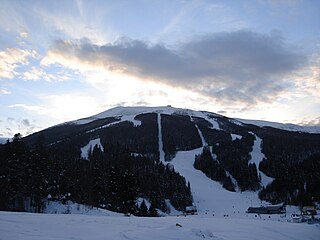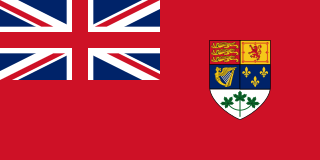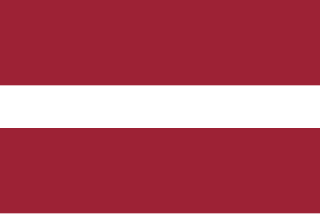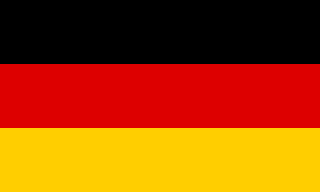
The 1948 Winter Olympics, officially known as the V Olympic Winter Games and commonly known as St. Moritz 1948, were a winter multi-sport event held from 30 January to 8 February 1948 in St. Moritz, Switzerland. The Games were the first to be celebrated after World War II; it had been twelve years since the last Winter Games in 1936.

The 1936 Winter Olympics, officially known as the IV Olympic Winter Games and commonly known as Garmisch-Partenkirchen 1936, were a winter multi-sport event held from 6 to 16 February 1936 in the market town of Garmisch-Partenkirchen, Germany. Germany also hosted the 1936 Summer Olympics, which were held in Berlin. It was the last year in which the Summer and Winter Games both took place in the same country.

Garmisch-Partenkirchen is an Alpine ski town in Bavaria, southern Germany. It is the seat of government of the district of Garmisch-Partenkirchen, in the Oberbayern region, which borders Austria. Nearby is Germany's highest mountain, Zugspitze, at 2,962 metres (9,718 ft) above sea level.
Figure skating at the 1936 Winter Olympics took place at the Olympia-Kunsteisstadion in Garmisch-Partenkirchen, Bavaria, from 9 to 15 February 1936. Three figure skating events were contested: men's singles, ladies' singles, and pairs skating.

Alpine skiing at the 1984 Winter Olympics consisted of six alpine skiing events, held 13–19 February in Sarajevo, Yugoslavia. The men's races were at Bjelašnica and the women's at Jahorina. Due to weather delays, both downhill races were postponed several days and run after the giant slalom races.

Canada competed at the 1936 Winter Olympics in Garmisch-Partenkirchen, Germany. Canada has competed at every Winter Olympic Games. Canadian Olympic Committee secretary-treasurer Fred Marples served as head of mission for the Canadian delegation to the Olympics and oversaw all travel arrangements. Amateur Athletic Union of Canada president W. A. Fry self-published a book covering Canadian achievements at the 1936 Winter Olympics and 1936 Summer Olympics. His 1936 book, Canada at eleventh Olympiad 1936 in Germany : Garmisch-Partenkirchen, February 6th to 13th, Berlin, August 1st to 16th, was printed by the Dunnville Chronicle presses and subtitled an official report of the Canadian Olympic Committee. He wrote that Canadians did very well at the 1936 Olympic games despite having one-tenth of the population of other countries. He opined that the length of the Canadian winter negatively affected summer training, and that Canadian athletes were underfunded compared to other countries.

Alpine skiing has been contested at every Winter Olympics since 1936, when a combined event was held in Garmisch-Partenkirchen, Germany.
The 1936 Winter Olympics were held in Garmisch-Partenkirchen, Germany. The games began on 6 February 1936, and ended on 16 February 1936. There were three cross-country skiing events held, in which only men competed. There were 109 male competitors from 22 different nations. The youngest participant was 17-year-old Resat Erces from Turkey, while the oldest participant was Nils Backstrom from the United States of America at 34 years old. The athletes whom collected the most medals were Oddbjørn Hagen of Norway, and Erik Larsson of Sweden – each received two medals. Sweden collected more medals than any other country in the cross-country skiing events at a total of five.
At the 1936 Winter Olympics, one individual Nordic combined event was contested. It was held on Wednesday, February 12, 1936 and on Thursday, February 13, 1936.

The United States competed at the 1936 Winter Olympics in Garmisch-Partenkirchen, Germany.

Norway competed at the 1936 Winter Olympics in Garmisch-Partenkirchen, Germany.

Latvia competed at the 1936 Winter Olympics in Garmisch-Partenkirchen, Germany. The nation returned to the Winter Games after having missed the 1932 Winter Olympics. These Games would be the last time that Latvia would compete at the Winter Games as an independent nation until the 1992 Winter Olympics. After the nation was annexed by the Soviet Union in 1940, Latvian athletes would compete at the Olympic Games as part of the USSR delegations.

Athletes from Germany (GER) have appeared in only 20 of the 22 editions of the Winter Olympic Games as they were not invited to two events after the World Wars, in 1924 and 1948. Germany hosted the 1936 Winter Olympics in Garmisch-Partenkirchen and had been selected to host in 1940 again.

The men's combined event was part of the alpine skiing programme at the 1936 Winter Olympics. It was the debut of alpine skiing at the Winter Olympics, and was the only men's event. The competition consisted of a downhill race on Friday, 7 February and two slalom heats on Sunday, 9 February.

The women's combined event was part of the alpine skiing program at the 1936 Winter Olympics. It was the debut of alpine skiing at the Winter Olympics, and was the only women's event. The competition consisted of a downhill race on Friday, 7 February and two slalom runs on Saturday, 8 February. Thirty-seven alpine skiers from 13 nations competed.

Peru sent a delegation to compete in the 2010 Winter Olympics in Vancouver, British Columbia, Canada from 12 to 28 February 2010. This marked Peru's debut at the Winter Olympics. The Peruvian delegation consisted of three athletes: two alpine skiers—Manfred Oettl Reyes and Ornella Oettl Reyes—and the cross-country skier Roberto Carcelen. The nation's best performance in any event was 67th place in the men's giant slalom alpine skiing event by Manfred Oettl Reyes.
For the 1936 Winter Olympics in Garmisch-Partenkirchen, Germany, a total of six sports venues were used. Alpine skiing events took place for the first time and were held in three different locations. Riessersee held the speed skating and some of the ice hockey matches while the bobsleigh events took place south of the lake. The ski jump and its neighboring stadium played host to the cross-country skiing, Nordic combined, and ski jumping events. Even though figure skating and some of the ice hockey matches took place outdoors at the ice stadium, the ice itself was artificially refrigerated to prevent ice thawing.
Mehmut Şevket Karman was a Turkish alpine skier and cross-country skier. He competed in the men's combined event at the 1936 Winter Olympics.













